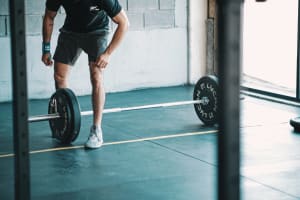
Why Eccentric Training Is Important Most people walk into the gym thinking about the lifting part of an exercise. But what if we told you that the most valuable phase isn’t the push, press, or pull… it’s the lowering? Welcome to the world of eccentric training—a game-changing approach that can help you get stronger, move better, and stay injury-free, no matter your fitness level. Let’s break down what it is, why it matters, and how to use it in your workouts. Every strength movement has three phases: Concentric: the lifting part (e.g., pressing up in a bench press or standing up from a squat) Isometric: the pause or hold Eccentric: the lowering or lengthening of the muscle under tension (e.g., lowering into a squat or bringing the bar down in a bench press) Eccentric training emphasizes that lowering phase—slowing it down, controlling it, and increasing the time under tension. And while it may feel less glamorous than lifting heavy weights fast, the eccentric phase is where real progress happens. The eccentric phase produces more force than the concentric phase, meaning your muscles are working harder as they resist the load. This increased tension leads to greater strength gains and muscle growth over time. Plus, because you can typically handle more weight eccentrically than concentrically, it allows for overload in a safer, more controlled way. Slowing down the lowering phase forces your brain and body to stay connected—engaging stabilizing muscles, improving motor control, and dialing in better technique. This matters especially for adults over 40, those rehabbing injuries, or athletes working on speed and agility. It’s not just about strength—it’s about control. Many injuries happen during the eccentric phase—think of a hamstring pull during the deceleration of a sprint or a knee tweak during the landing of a jump. By training the eccentric phase deliberately, you build resilience in tendons and ligaments, teaching your body how to absorb force safely and efficiently. This is especially important for aging adults, runners, and young athletes. The ability to slow down is just as important as the ability to go fast. Eccentric movements lengthen muscles under tension, which can improve flexibility and joint range of motion over time. This makes it a powerful tool for both strength training and mobility work. Say goodbye to stiff hips, cranky knees, and “tight” hamstrings. Try these simple tweaks to start reaping the benefits: Slow Down: Lower into your squat or press for a count of 3–5 seconds. Pause and Control: Don’t rush the descent—own every inch of the movement. Use Tempo Work: Add specific tempos to lifts (like 3-1-1 or 4-0-1) to keep you focused. Ask a Coach: A trained eye can help you integrate eccentric work safely and effectively. At our gym, we use eccentric-focused programming as part of our semi-private coaching model. Every exercise has a purpose—and eccentric control is one of the keys to long-term strength and injury-free progress. If you want to move better, lift stronger, and stay in the game longer—eccentric training isn’t optional. It’s essential. Let’s slow it down… so you can speed up.
The Overlooked Key to Strength, Control, and Injury PreventionWhat Is Eccentric Training?
Why It Matters
1. Builds More Strength and Muscle
2. Improves Control and Movement Quality
3. Reduces Injury Risk
4. Boosts Flexibility and Joint Health
How to Add Eccentric Training to Your Routine
Ready to Train Smarter?

